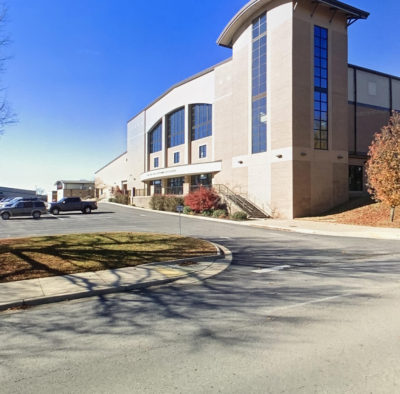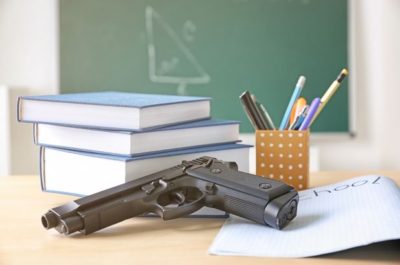
SEARCY, AR. (LP) — The idea of arming teachers—or loosening state restrictions to allow concealed-carry permit holders to bring guns into schools—is often circulated after school attacks. It gained attention after the massacre at Sandy Hook Elementary School in Newtown, Conn., in 2012 and was revived in the wake of the 2018 mass shooting at Marjory Stoneman Douglas High School in Parkland, Fla. But putting guns in the hands of school staff is often met with resistance from educators, who say they don’t want the responsibility of carrying and securing a firearm on top of their already demanding jobs. Searcy High School gave a statement stating, “Searcy School District believes that teachers are trained to teach. Putting the large responsibility of employees carrying a concealed weapon on school campus is one that we do not feel would be advantageous to our school community. We have a very close working relationship with our local law enforcement and they are regularly present in our buildings. Additionally, we have school resource officers at each campus daily. Finally, all Searcy School District employees have been trained in how to respond in the case of an active shooter investigation. We feel that the safety plans we have in place and the security measures we take daily are the best ways to ensure our students and staff members have the best protection.”

Many teachers believe that arming themselves—and their peers—would make schools less safe. President Trump, for one. At a speech just after the Parkland shooting, he argued that armed teachers with training and experience who “love their students” might be better able to protect them in an active shooting scenario than an armed police officer. A student from High School who would wanted to stay anonymous, “I think guns wouldn’t be safe because you never know what could happen with them.” There’s also the thorny question of liability: Who would be responsible if something went wrong? Many things could go wrong, experts say—a student could find or steal a teacher’s firearm, the weapon could accidentally discharge, or a teacher could shoot an innocent bystander during an active-shooter situation.

Arming staff could get expensive. A high-quality, name-brand, semi-automatic pistol or other type of handgun could run anywhere from $500 to $1,200. And the idea of diverting already stretched resources to these and other costs such as firearms training could be a very tough sell. There’s also concern that training and arming teachers is expensive and could take funding away from other academic or school safety resources. Marissa from Searcy High said, “I think it would be great for teachers to be armed, but how would the school pay?” Access to a firearm, irrespective of age, triples the risk of death by suicide and doubles the risk of death by homicide. There have been several incidents of guns intentionally or unintentionally discharged on school grounds by school staff. This includes both intentional and unintentional shootings such as a janitor who killed two of his colleagues at a performing arts school in Florida. A Spanish teacher who was fired and then returned to school with an AK-47 in a guitar case that he used to kill the school headmaster and then himself. Firearm suicides by faculty staff at schools or intentional incidents by both school resource officers in schools and teachers who accidentally discharged their firearms. There’s also concern that training and arming teachers is expensive and could take funding away from other academic or school safety resources.
